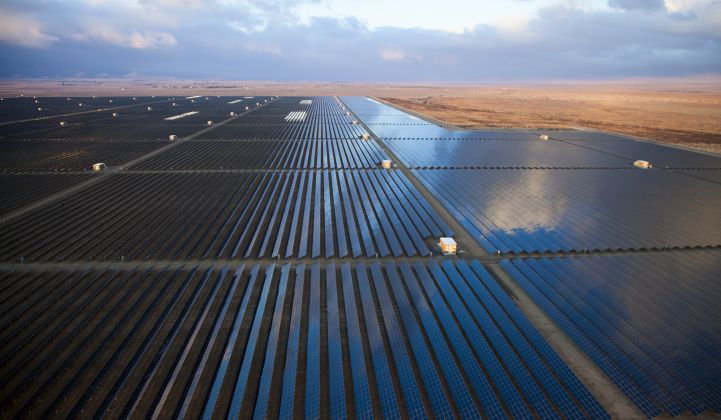Utility-scale solar photovoltaic power added more than 9 gigawatts (AC) of capacity to the U.S. power grid in 2016, making it the most dominant new fuel source for the first time in a calendar year, according to the U.S. Energy Information Administration.
Natural gas was not far behind at 8 gigawatts of new capacity and wind added nearly 7 gigawatts, according to the EIA. Wind, solar and natural gas made up 93 percent of new capacity, with some hydropower and nuclear rounding out the fuel mix of new additions.

When distributed solar is included in the tally, solar’s role in new U.S. capacity is even stronger. GTM Research forecasts about 2.5 gigawatts (DC) of distributed residential solar PV projects in 2016, and an estimated total for the year of 14 gigawatts (DC) -- or 11.2 gigawatts (AC) to use EIA terms -- when utility, commercial and residential solar projects are tallied.
EIA acknowledges that its annual total could be a little low given that it's only based on reported additions and not projections. There are discrepancies that might not put solar ahead of natural gas in the end. “This year, as is the case in many years, expected capacity additions in December are much higher than in any other month,” EIA states.
In past years, the rush of December additions has been because of the looming expiration of tax credits at the end of the year. With the extension of the federal solar Investment Tax Credit at the end of 2015, however, there could be fewer clean energy projects rushing to come on-line by year’s end. In fact, there is already quite a bit of spillover of solar projects from 2016 into 2017.
There is also a matter of reporting. GTM Research tracks additions in DC, while EIA uses AC. GTMR forecasts 10.2 gigawatts (DC) of utility-scale solar capacity will be added in 2016. When converted from DC to AC, that figure is just under 8 gigawatts (AC), which is lower than EIA's 9.5 gigawatt (AC) number.
While the final figures are up for debate in the last days of December, the surge of solar in 2016 is undeniable. Solar’s dominance as a source of new energy is not limited to California, although it does make up the majority of additions. North Carolina installed more than a gigawatt of utility-scale solar, with Nevada, Texas and Georgia ranking in the top five. The amount of utility-scale solar installed in 2016 in the U.S. is more than the past three years combined, according to EIA.

Wind additions were slightly lower than last year, although the U.S. did see its first offshore wind farm come on-line. Nuclear also made the list for the first time in decades when Tennessee Valley Authority's Watts Bar 2 came on-line, 43 years after it began construction.




